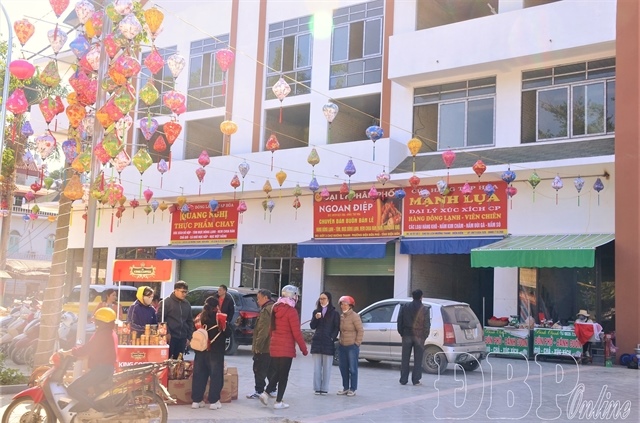Da Nang's firms take bold measures to curb labor shortage, reverse migration
Da Nang's firms take bold measures to curb labor shortage, reverse migration
Da Nang City, the economic and service hub of central Vietnam, is facing an increasing challenge to recruit and retain blue-collar workers amidst persistent labor shortages, prompting local enterprises to apply drastic measures to meet manpower demands.

Major industrial zones in Da Nang City, central Vietnam, recruit unskilled laborers year-round due to ongoing worker shortages. Photo: Truong Trung / Tuoi Tre |
A recent trend in the Southeast Asian country, as reported by Tuoi Tre (Youth) newspaper, shows a “reverse migration” pattern, with many migrant workers returning to rural areas following the COVID-19 pandemic.
In 2023, Ho Chi Minh City saw only a 0.67 percent, or 65,000 people, increase in its migrant population, a significant drop from the previous annual influx of 200,000 - 250,000.
Data from the Dong Nai Provincial Federation of Labor reveals in the past three years, 50,000 - 60,000 workers have left for other provinces or returned to rural areas.
As more industrial zones have been developed nationwide, workers increasingly prefer employment closer to home to reduce living expenses and maintain stronger community ties.
High turnover, especially after the recent Lunar New Year (Tet) holiday in February, forces companies to frequently post job openings for thousands of new hires, affecting production and supply chains.
Companies often recruit year-round to counter constant shortages.
Nguyen Van Phu, deputy director of Daiwa Da Nang Co., Ltd. in Hoa Khanh Industrial Park, said he has never seen such a sharp decline in job applicants in his 19 years with the company.
 |
| Worker housing developed by the local government in the Hoa Cam Industrial Park, Da Nang City, central Vietnam. Photo: Truong Trung / Tuoi Tre |
“It’s now easier to recruit college graduates than unskilled laborers,” Phu remarked, explaining that his company’s plan to expand by hiring 300 additional workers and increasing productivity by 30 percent has been stalled for six months due to ongoing labor shortages.
Despite implementing online applications and travel subsidies for interviewees from rural areas, Phu’s company faces ongoing recruitment challenges.
“We recruit weekly but only manage to hire about 20 people each time, whereas skilled workers with a bachelor’s degree are easier to find.”
To counter turnover, Daiwa Da Nang has implemented retention policies, keeping its annual attrition rate between 2 - 5 percent, well below the 10 percent average seen in other industrial parks.
However, the company is concerned about a potential increase in migration back to rural regions with 70 percent of its workforce living in Da Nang’s suburban areas.
Phu explained that many long-term employees initially came to Da Nang due to limited job opportunities in their hometowns.
However, with new industrial zones operating in Quang Nam and Quang Ngai Provinces in central Vietnam, workers are opting for local jobs with lower living costs.
Industrial zones across Quang Nam Province, such as Chu Lai, Thaco Chu Lai Truong Hai, Tam Thang, and Dien Nam - Dien Ngoc, as well as the Dung Quat Economic Zone and VSIP Quang Ngai Province are in need of tens of thousands of workers.
Hoa Phat Dung Quat Steel JSC requires approximately 8,000 employees across various skill levels.
 |
| Workers at Hoa Cam Industrial Park, Da Nang City, central Vietnam, grow vegetables to supplement their living costs after work. Photo: Truong Trung / Tuoi Tre |
Companies in the central region primarily seek workers for mechanics, automotive, textiles, footwear, and electrical components manufacturing.
By September, Quang Ngai Province had registered 848 new businesses with over VND4 trillion (US$158 million) in capital and attracted 10 new foreign direct investment projects totaling around VND134 million ($5,290).
To attract a stable workforce, companies are using incentives, such as online applications, transportation allowances for interviewees, and referral bonuses.
Phu also suggested partnerships with vocational schools and colleges to provide a part-time labor force through work-study programs, allowing students to earn income and gain experience while meeting the companies’ labor needs.
To retain workers, Foxlink Co., Ltd., a major employer with 12,000 workers in Da Nang, proposed allocating city land for worker housing to create a more stable living environment and foster long-term employee commitment.
According to Da Nang’s Department of Labor, War Invalids and Social Affairs, the city’s workforce includes over 633,000 residents aged 15 and older.
Each year, 35,000 residents reach working age, and around 20,000 vocational and educational graduates enter the workforce, representing a potentially ample labor supply for local companies.
However, a mismatch between labor supply and demand persists due to changing job trends.
Truong Ngoc Hung, an officer from Da Nang’s Department of Labor, War Invalids and Social Affairs, noted a significant migration of workers from city-based industrial parks to rural areas over the past few years.
Rising living costs, such as rent, utilities, and minimal wages, in large cities often leave migrant workers with just enough income to cover basic needs, contributing to low interest in manufacturing jobs.
Many young workers are shifting from manufacturing to tourism, service industries, and flexible freelance or entrepreneurial roles.
“We must establish fair wage structures, robust welfare policies, and comprehensive social benefits to create stability for workers and their families,” Hung said, emphasizing the need for ‘economic leverage’ policies to address the labor shortage.



























